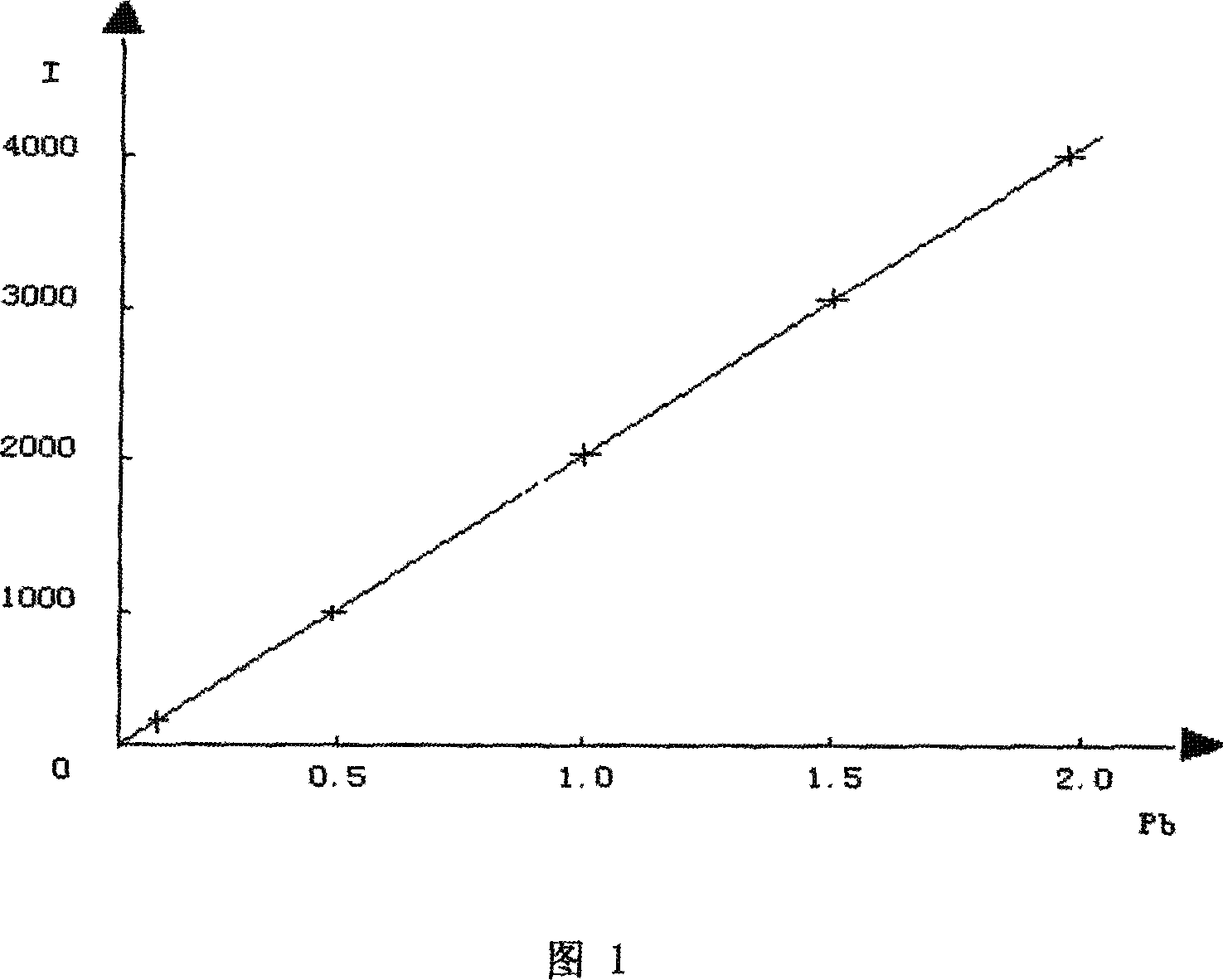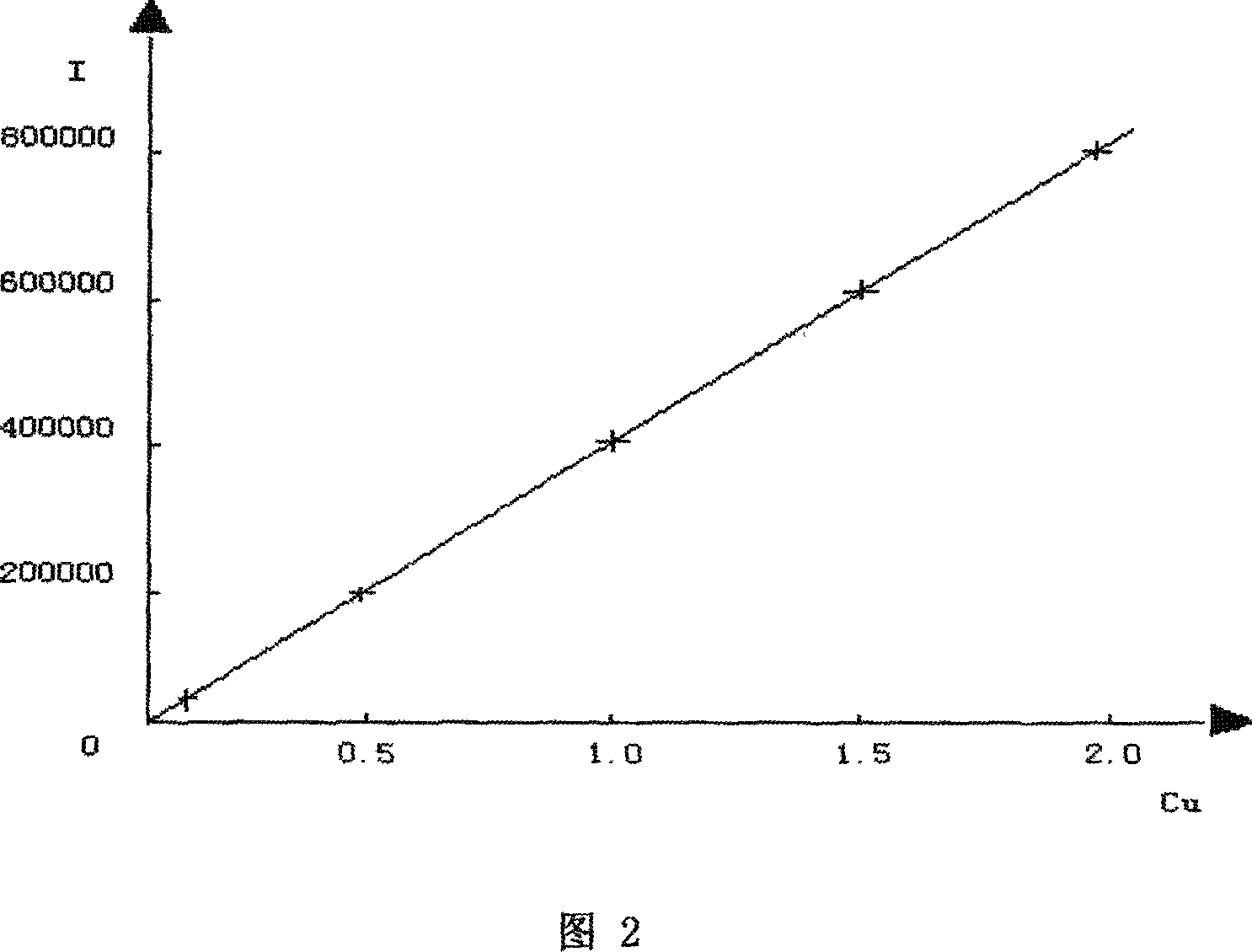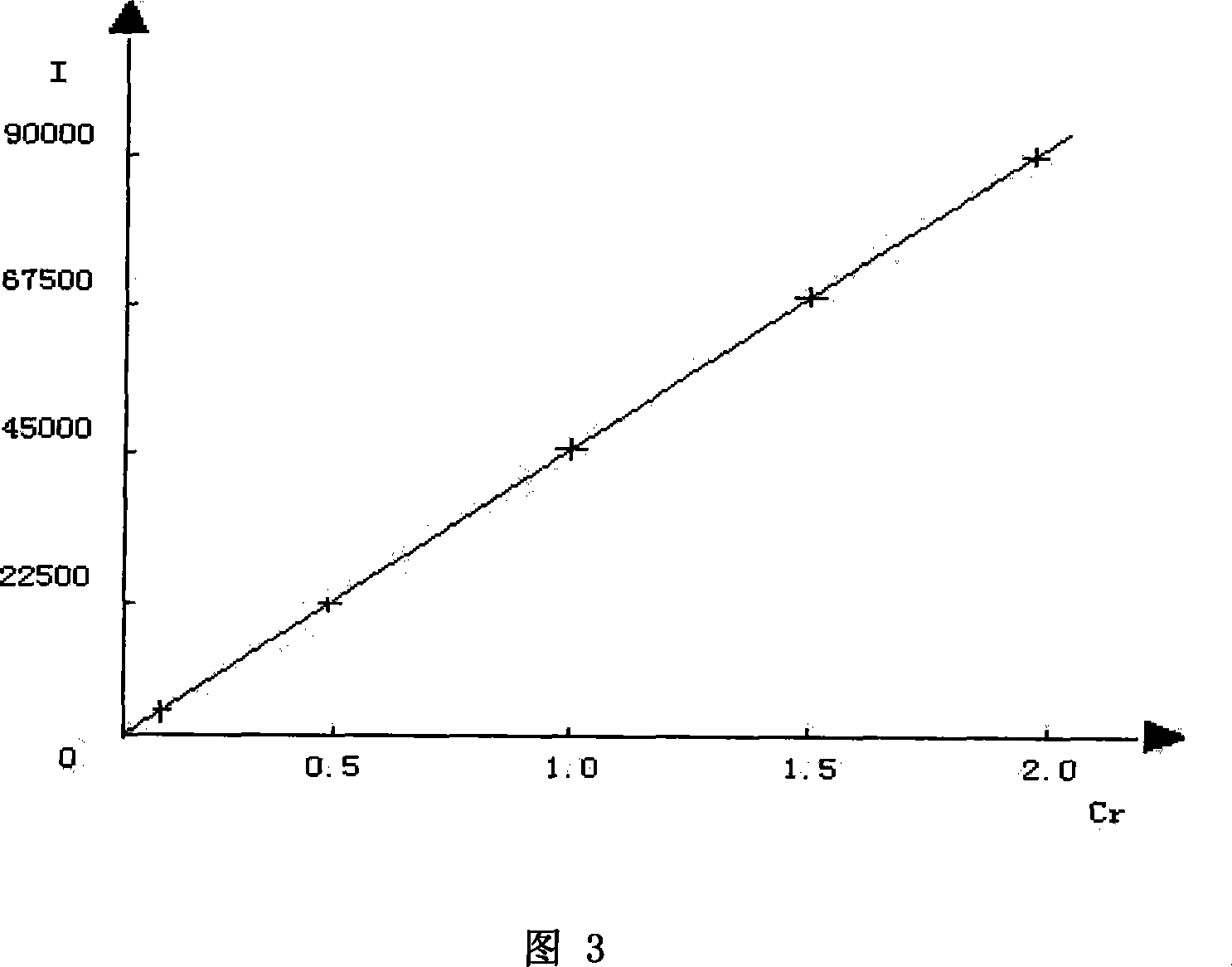Measuring method for harmful elements including lead, copper, chromium and cadmium in lotus root
A technology of harmful elements and determination methods, which is applied in the field of chemistry, can solve the problems of undiscovered detection of heavy metal elements in lotus root, and achieve the effect of small error and accurate results
- Summary
- Abstract
- Description
- Claims
- Application Information
AI Technical Summary
Problems solved by technology
Method used
Image
Examples
Embodiment 1
[0035] 1. Use the instrument:
[0036] Inductively coupled plasma atomic emission spectrometer (ICP-AES), model: LEEMANProdigy
[0037] 2 Reagents used:
[0038] The distilled water is double distilled water, and the chemical reagents are of superior grade.
[0039] Nitric acid (ρ1.42g / mL); perchloric acid (ρ1.67g / mL).
[0040] Lead, copper, chromium, cadmium standard stock solution: national standard reagent (GBW), the concentration is 1mg / mL.
[0041] 3 Lead, copper, chromium, cadmium calibration curve drawing
[0042] Use the mixed standard working solution, measure under the working conditions of the instrument in Table 1, and the computer automatically draws the calibration curves for lead, copper, chromium, and cadmium, as shown in Figures 1-4.
[0043] project
[0044] 4 Determination
[0045] 4.1 Lotus root sample preparation
[0046] Several sections of fresh lotus root were taken, washed, chopped and mixed evenly to prepare lotus root samples for tes...
PUM
 Login to View More
Login to View More Abstract
Description
Claims
Application Information
 Login to View More
Login to View More - R&D
- Intellectual Property
- Life Sciences
- Materials
- Tech Scout
- Unparalleled Data Quality
- Higher Quality Content
- 60% Fewer Hallucinations
Browse by: Latest US Patents, China's latest patents, Technical Efficacy Thesaurus, Application Domain, Technology Topic, Popular Technical Reports.
© 2025 PatSnap. All rights reserved.Legal|Privacy policy|Modern Slavery Act Transparency Statement|Sitemap|About US| Contact US: help@patsnap.com



